The horror video game genre has been revitalized in recent years and it now strongly populates Steam’s indie game section. Even mainstream horror games are being released again, such as The Evil Within. We all see this, but how many of us wonder why? What caused this horror revolution? These horror games are quite a lot different than the classics like Resident Evil and Silent Hill.
This revolution was sparked by Penumbra, a first-person PC exclusive episodic horror game released by Frictional Games in 2007 and 2008, and it is currently within our list of top ten best stories of all time. It was the first game from Frictional Games, who later brought us Amnesia: The Dark Descent and SOMA (and no, they did NOT develop Amnesia: A Machine for Pigs). But Penumbra didn’t directly cause this surge of new horror games, it indirectly sparked it. The game that directly resulted in the rebirth of horror video games was Amnesia: The Dark Descent, which uses a similar formula as Penumbra.
In this article we’re going to review Penumbra in its entirety. That includes Penumbra: Overture (2007), Penumbra: Black Plague (2008), and Penumbra: Requiem (2008). We’re going to look at what makes this game so special, why its formula is what revived the genre, and why Amnesia: The Dark Descent was the one that directly sparked this revolution instead of Penumbra. We’re also going to score Penumbra relative to how we would have scored it in 2007-2008, although really the only score that is affected is Audio & Visuals since we have new graphics standards today, but not even audio standards since we have always maintained high voice acting standards for what we consider perfect, not to mention sound effects are generally less advanced in gaming today.
So without further ado, move on to the next page to start reading our in-depth analysis of Penumbra.
Overture

Overture, the first episode as the name implies, is no more than 4 hours long, as is Black Plague. Requiem is actually longer at 6-8 hours despite being merely an expansion, and a totally unnecessary one as you’ll soon find out if you haven’t played it already.
All episodes use the same engine which is a largely unremarkable in-house engine made by Frictional Games. It does have two very nice features though; a fairly easy to use SDK with its streamlined AngelScript language (C++ based), enabling easy and quick creation of maps and entire campaigns. The other nice feature is its sound processing, utilizing OpenAL and EFX. But we’ll talk more about this on the Audio & Visuals page.
Overture and Black Plague are standalone installations while Requiem installs over Black Plague. Requiem still has its own executable and main menu though. The main menu of Penumbra will immediately send chills down your spine, and if you’ve played classic horror games like Silent Hill and Resident Evil, it will evoke strong feelings of nostalgia. This is due to the visual presentation of the menu as well as the wonderful score by Mikko Tarmia. Funny how they nailed atmosphere just in the main menu. That really raises hopes for the game, doesn’t it?
Even before reaching the main menu, Penumbra is gripping. An introduction in the form of a cryptic, eerie message typed by Philip LaFresque, the game’s silent protagonist (silent except for in Black Plague’s introduction), greets players upon launching the game.
Penumbra: Overture is the only game from Frictional Games with a combat system. Every other game, episode, or expansion of theirs, including the rest of Penumbra, abandons this, and the abandonment of combat is part of what makes their games famous (and what made them unique before everyone copied them). The game with what most closely resembles Overture’s combat may very well be The Elder Scrolls II: Daggerfall oddly enough, although a Nintendo Wii game like Red Steel‘s sword fighting would be a decent comparison. Combat in Overture is almost entirely melee based, using simple tools like brooms, hammers, or pickaxes, and swinging them. To swing the player must hold the attack button (LMB by default) and swing the mouse. The swing in-game will resemble your mouse swing, again like Nintendo Wii games but without a full range of motion since a mouse is always on a surface. Dynamite sticks are another weapon.
Overall it isn’t very enjoyable combat although it isn’t a chore either, it’s just there. You don’t think much of it and most players wouldn’t go out of their way to use it. No doubt this is partly why they ditched the system, although the main reason was the allure and danger of having no combat at all.
Combat is included but the emphasis is on stealth, fleeing, and using distractions. Distracting is feasible thanks to the object interaction; the game allows you to pick up and throw almost any object, or push objects that are too big/heavy to be thrown. On that note, like the Silent Hill games Penumbra lets you examine almost anything in the game world and a description is provided for it. Even Amnesia has no such thing, while SOMA has a narrated version that’s a lot less common since voice acting costs a lot more than writing text. This same object interaction and object descriptions is in the rest of Penumbra. As far as gameplay goes, combat and AI are the main differences between Overture and the rest, with Black Plague and Requiem having no combat at all, while Requiem doesn’t have any enemy encounters at all.
The emphasis on mouse usage isn’t just exclusive to combat. It’s also used for the advanced object interaction; examining things, picking up objects, rotating objects, throwing objects, pushing heavy objects, and rotating fixed objects like wheels and valves. It all works logically, following your mouse movement, although rotating wheels/valves and the like doesn’t work smoothly and sometimes they move in the opposite direction you want.
Penumbra does not have the enemy variety, detail, or polish of SOMA, although detail and polish (the latter in many ways but not all) are still much better than most modern day AAA games, which is sad given Penumbra was a low budget indie game. But it doesn’t leave much to be desired, it is extremely tightly crafted. But SOMA in comparison has more detailed higher production level design with less model/texture repetition, and almost every enemy encounter has a unique enemy in SOMA. Penumbra: Overture only has two regular enemies and one special one.
This being a horror game set in dark environments, Penumbra gives you several light sources with most of them being limited. There is a battery-consuming flashlight which is quite dim like every single video game flashlight until much more recent games. There are flares which you can ignite, hold, or throw, and they expire momentarily. These flares are also unrealistically dim. Last but certainly not least is the overpowered glowstick. It’s big, it’s green, and while it only illuminates a very small radius around the player, it’s unlimited. They really should have opted to have glowsticks found in the environment as equippable objects like flares with the ability to be thrown, like in Underhell. These light sources apply to the rest of Penumbra although Requiem has an unlimited flashlight since it isn’t a survival horror game anyway.
Penumbra also has an inventory system with sound effects that once again remind us of Silent Hill. The layout of the inventory itself is simple and perfectly fitting for a horror game. It uses hotkeys, there’s a battery icon for flashlight, a health icon, and far more inventory space than you’d ever use. Again, this applies to the rest of Penumbra too, not just Overture.
Spoilers for Overture begin here.
Penumbra: Overture represents a bold approach to game design. We mentioned it’s 4 hours long, and the word ‘overture’ means introduction or prelude (and it originally referred to music). Penumbra: Overture really is a four hour introduction, but don’t let that steer you away. It is captivating early on, but the plot only ever raises questions throughout. Penumbra: Overture answers no questions at all, Black Plague is the only one that answers any questions, and thankfully it doesn’t answer all of them.
Penumbra (all episodes and the expansion) has one silent protagonist, a 30 year old University physics professor named Philip LaFresque, from London. Philip is living a normal life until he receives mail from his father, who was never a part of his life. In fact, he was presumed dead for thirty years, so Philip never even considered his father to be alive. Why would his father send something now if he abandoned the family in the first place? The mail contained instructions to visit a bank in Mayfair and retrieve something from a safety deposit box, and destroy what was inside. Philip does visit the bank and he does retrieve the safety deposit box, discovering cryptic documents within. But rather than destroying them he takes them to a linguistics professor who couldn’t even fully decipher them. This was Philip’s first mistake, so he says, but human curiosity wouldn’t have permitted simply destroying potential clues about the father that abandoned you. He had to know more. Even though they couldn’t make much sense out of the documents, coordinates to a mine in Greenland were discovered, so this becomes Philip’s next destination. An abandoned mine in freezing cold Greenland where the cold is enough to quickly kill you. Not a surprising location for a horror game.
Actually, the cold nearly does claim Philip’s life. Luckily he is able to find an entrance to the mine through a hatch in the ground, but unluckily the ladder leading down breaks and he becomes trapped within. Again, this sounds just like any horror game or movie, but Penumbra is truly anything but that. They make the most of this unoriginal setting through detailed level design, but we wouldn’t claim its setting to be one of the most memorable ever, especially Overture which is more mundane than Black Plague and Requiem.
The mine is filled with gunpowder, explosives, and a local fauna. The most common animals are spiders and dogs which have mutated and become larger and more aggressive than normal. There is a very interesting sub-plot involving a trapped miner having to live off of the spiders. His story arcs quite far and is very well written, illustrating his personality and mental degradation well, and making you wonder if you’ll become like him.
So you’re trapped in your destination. Your goal is to find out where you are and what happened to your father. The mine was clearly used during WWII as a bunker of sorts. Its as much of an antagonist as the mutated animals, collapsing and blocking your path often. Some so called “puzzle solving” is thus involved, although it’s really logical object interaction and use of machinery or vehicles.
All episodes of Penumbra have hub areas and non-linear advancement, which separates it from many other horror games. Overture moves somewhat slow, mostly due to the plot which again raises questions and answers none. Yet it’s exceptionally well executed in building up to the main portion of Penumbra which is Black Plague. But anyone thinking of skipping Overture should discard those thoughts, as Overture is still vital especially due to one of its characters, Red.
Dark scary mines and mutated animals including a gigantic worm boss-type creature (which sometimes brings scripted chase sequences), texts mentioning Inuit mythology, and occasional whispers in your head are all very cool, but aside from spooky atmosphere and enemy encounters that can actually be called frightening, Penumbra: Overture’s best aspect is its writing quality. Whether it’s the spider eating Dr. Roberts mentioned earlier in this analysis, whose story grows more painful and sympathetic despite never actually meeting him face to face, or Red and his unstable personality and memorable dialogue, Penumbra is one of the most well written games out there. This applies to both Overture and Black Plague, but on this page we are focusing on the former. The writing is more subtle in Overture and its best aspects are really these two characters, since the plot does not extend very deep in Overture.
Dr. Roberts and Red appear to be the only survivors in the mine. Penumbra does a masterful job at building up character encounters, perhaps better than any other game. Dr. Roberts, the spider eater, is revealed when Philip comes across his living quarters. Roberts documented his story to some degree using notes, which he had to write in pitch black. The writing quality is perfect, illustrating his terrible fate of being trapped in a pitch black area of the mine, completely incapable of seeing once his light source ran out, hunting for spiders in the dark and hiding from the mutated dogs which kept him pinned down the entire time. The player will anticipate meeting him, although he/she won’t be sure if it the encounter will ever happen. But it does, and it will feel like a huge moment. You never actually see him though; he is behind a locked door and is then heard being killed off screen by something gigantic (the huge “Grey Rock Worm” pictured above). That’s the end of Dr. Roberts.
And this madman Red? He contacts you over a speaker system present throughout the mine, broadcasting from some place, so it is one way communication. He is well spoken, although has a very odd choice of words. His moods swing between extremes; sometimes he considers Philip a friend and treasures this perceived friendship, but other times he will lash out at Philip and threaten him. But he always provides intriguing dialogue whether it’s about the best way to cook a rat (sautéed with a bit of engine oil according to him), or finding go-go juice (gasoline) to power up a vehicle, or his hopes of being rescued by Philip, or anything else.
Penumbra: Overture builds up the eventual encounter with Red through his character development, and also because of his promise of answers. He claims to know what Philip seeks, and will provide answers upon being rescued.
So that sums up Penumbra: Overture prior to its ending quite well. The player will advance through the mine surely but slowly, not discovering much in the process but the stories of Dr. Roberts and especially Red keep the player interested, as does the extremely tense atmosphere. The pace is an upward climb with the climax at the very end, when the player finally meets Red. Just like with Dr. Roberts, there is no face to face encounter. This is a recurring thing with Penumbra, but as with everything else it is very well executed.
Red has no answers. He lied. He traps himself in a furnace and tells you he just wants to die so the pain can end, and he apologizes for lying to Philip and using him. He wants Philip to incinerate him, and Philip is left with no choice. This makes for one of the most memorable video game endings.
After incinerating him and hearing his screams of agony and even him yelling, “Turn it off!” the player finds the key to his living quarters. His quarters are so detailed that they help tell the story of Red further. It is also revealed that his real name was Tom Redwood, and that he was trapped in the mine for thirty years, starting when Red was 14. He killed time reading Shakespeare which explains his odd speech.
Also present is the large metal door which Red described. He said the answers truly lay past the door. After entering the door, Philip is immediately met by another being in the shadows who does not reveal himself/herself/itself. It stalks Philip and eventually knocks him unconscious and drags him away. That’s the end of Overture, and the beginning of Black Plague is right after. A cliffhanger of an ending, but then again it’s not really an ending—it’s just the beginning.
Those without patience or the attention span of an adult may take issues with Penumbra: Overture’s steady upwards pace, they may feel that it doesn’t reveal enough about the story. But it is an outstanding overture; very tense and easily frightening to most, interesting atmosphere and amazing object/world interaction, with outstanding writing behind the characters of Dr. Roberts and especially Red. The latter provides intriguing dialogue throughout the game, picking your brain until the climactic, memorable ending. Then comes a cliffhanger to begin the main chapter which is Penumbra: Black Plague.
Black Plague

Since Penumbra: Black Plague is built on the same engine with only minor changes, it feels largely the same as Overture as it’s literally just part 2 to the whole game, while Overture is part 1. The biggest difference is the lack of a combat system. Admittedly the lack of combat doesn’t make a whole lot of sense in Black Plague, since the enemy creatures aren’t extremely powerful like they are in Amnesia and SOMA. Black Plague only has one regular type of enemy, along with one unique enemy. But this game still does a perfect job at discouraging combat. You wouldn’t feel driven to it either way.
The absence of combat raises tension, as does the fact that some enemies wield flashlights making it much harder to hide. Black Plague’s enemy encounters are definitely more tense than Overture and also Amnesia, since like Overture enemies don’t disappear (“de-spawn”) if they can’t find you like they do in Amnesia. Black Plague’s enemies are relentless.
A nice feature of Black Plague is a playable tutorial, teaching you how to move, interact with objects, and solve a very basic “puzzle” (using the term loosely).
Black Plague starts right after Overture. While Overture has a steady uphill pace with an ending climax, Black Plague’s plot moves quickly but not too quickly to avoid feeling rushed. It’s also about four hours just like Overture, but a very different four hours. Black Plague never lets you off the hook, it will be hard to stay seated for this one. Yet it remains as tightly crafted and deliberate as Overture. Truly outstanding game design and what an achievement especially given the budget.
It actually does open with a series of narrated intro slides that explain the start of Overture and in a few sentences summarize what happened in Overture (as much as possible in a few sentences that is). This way Black Plague is not totally unwelcoming to newcomers, but regardless, don’t play Black Plague without playing Overture first because it’s stupid and it makes no sense. The two games are only a year apart and are virtually identical technically, and have very similar gameplay despite the absence of combat in Black Plague.
Spoilers for Overture and Black Plague begin here.
Black Plague begins with Philip waking up after his run in with the unknown person at the end of Overture. Apparently he was dragged into a locked room that was used as a prison cell of sorts. In it are the recordings of Eloff Carpenter, a person who was once trapped in the same room. Despite being long gone his notes and clues lead Philip out of this room, right in the nick of time since it seemed whatever incapacitated Philip was about to return to finish the job. After escaping this room you will immediately see how dangerous Black Plague is. You will see things like dead humans lying on operating tables with odd X-Ray images and the like, and you will hear violent movements and more. It soon becomes clear that Philip is within some sort of research facility, so the mine from Overture was simply a front for it. We at GND-Tech love secret underground research facilities!
Furthermore, the whispers in Philip’s head have gotten a bit worse. They occur more frequently. Still, anyone who hasn’t played the game won’t think anything of it until a certain key plot point in Black Plague. Until you reach this point Black Plague is similar to Overture but with far more tense enemy encounters (enemies being naked humanoids who speak gibberish) and a different environment. This environment includes more object interaction that’s different than the things you interact with in Overture’s mine. Desktop computers are a big part of it—you can use these PCs to read documents which explain more about the plot, run executable files, and sometimes even play games.
Certain computers have control over parts of the environment, like security applications that control electronically locked doors.
One turning point in the plot occurs on one of these computers, when a character makes contact to you via a voice chat program. Her name is Amabel Swanson, and she is a trapped researcher. She requires Philip’s aid; she is locked in a room and needs to be freed. She promises answers, and does provide some over the computer. Whereas Red communicates to Philip throughout Overture via radio, Amabel does so on various computers throughout the game. She does explain the humanoid enemies, claiming they are infected with an unknown virus (hence the name ‘Black Plague’). She was working on a cure. So Philip must make his way to her, if anything just to find another survivor but answers and information about his father is welcome.
As Penumbra has a silent protagonist, the communication with Amabel is one way just like with Red. She can see you via the web cameras of the computers you use, but hers is broken and produces no image. Likewise, there is no microphone system at any computer you visit hence the one way communication. Black Plague makes this all work well though.
Occasional “dialogue” with Amabel, intense enemy encounters, and a mysterious setting are cool but not enough to drive a game forward on their own. Black Plague throws something else at you, something that occurs at the aforementioned turning point in the plot, something that finally explains the whispers in your head even if only partially. At some point in the game Philip suddenly passes out. Exhaustion? Not quite. He wakes up in a dream world within his own mind. This playable section of the game is brilliant. First, Philip wakes up on the boat in which Overture begins, but something is off. It changes, and the player must rearrange objects in the room so that it matches a photograph on the wall. It changes again, degrading in the process. First, a spider egg like those in Overture appears in the room. Then it continues to degrade and degrade, becoming more horrifying each time. At some point it changes entirely, the snowy outside environment disappearing completely, and a dark hallway opening up. This hallway is filled with blood and more, and Philip must escape. Some “puzzle solving” is involved, and some of it is really disturbing. But then a presence manifests, an evil one, and it pursues Philip. The player must escape through this scripted chase sequence. Philip is being chased in his own mind, but he does escape.
What was all of this? It was the visual manifestation of this so called Black Plague (never actually called this throughout the game). It affects the mind, hence the mad humanoid enemies throughout the game. You see Philip’s memories deteriorate and the chase symbolizes its attempt at taking over Philip’s mind. But Philip escapes, so he doesn’t become like the other monsters in the game. What happens instead is far more interesting; the virus achieved a partial takeover of Philip’s mind, and this manifests as a voice and personality within Philip’s head. This results in arguably the greatest antagonist in video game history and a significant driving force in Penumbra. He names himself Clarence.
Clarence is the most quoted person on our list of best video game quotes. He taunts Philip and plays mind games on him the whole time. He brings up many interesting questions about the righteousness of what Philip is trying to do, about the nature of his life and his birth, and a lot more. He jokes often, and in a cruel way of course. He wants full control over Philip. He slowly gains control over Philip’s mind throughout, and uses it against him, resulting in a really annoying gameplay portion later on.
And the whispers in Philip’s head? Those were early symptoms of the virus. So he was infected even throughout Overture. Early in Overture. How did he get infected? This is never answered clearly. It could be airborne as far as we know.
The virus drives everyone mad. If one doesn’t escape from it while it takes over their own mind, the way Philip did, they become thralls just like the game’s basic enemies. If they do escape they end up like Philip with a voice in their had and decreasing sanity. This is what happened to Red, as Clarence reveals. How does Clarence know this? What is this attachment Clarence seems to have to the game’s common humanoid enemies? It’s not a simple mind destroying virus, that much is certain. At this point the player will really hope Amabel Swanson provides answers, or more answers at least.
So now there is a lot going on in this 4 hour game. Overture did a masterful job at building up the face to face encounter with Red (which never exactly happened), and Black Plague does the same with Amabel Swanson. Similar to what SOMA did with Catherine Chun. When Amabel is finally reached, the game tries to defy the player’s expectations. She bursts through a door and looks and behaves exactly like all the other infected human enemies. The player is locked in a room with her and must kill her by crushing her under an extremely heavy object. Once the object lands on her, the player will be surprised when she lets out a scream totally normal to human beings. Then, Clarence lifts the veil from your eyes, and Amabel is seen crushed under the heavy object, but she no longer appears to be infected, she looks normal. Clarence laughs and asks Philip if he really fell for that charade. “Come on Monkey, take a joke.”
Clarence had enough control over Philip’s mind to make him perceive Amabel as a regular infected person when she wasn’t. This led to her death. Philip is left speechless. If you didn’t hate Clarence before, you will now. Something similar happened several times earlier in the game, in which Clarence was able to deceive Philip’s senses, but those events were minor and even amusing. Thankfully Amabel was a considerate person and left instructions on how to formulate her experimental cure which was never tested, in the event she perished. Philip is a physics professor, not a chemist, but of course the cure is very simple to put together as this is a video game after all.
It is also revealed what happened to Philip’s father, Howard LaFresque. He was a very high ranking person in this research facility, which studied Archaic findings and artifacts, hence its construction. It is revealed that these researchers found something big here, deep underground in Greenland, and the research facility was created around it to study it. Unearthing this discovery is what led to the virus outbreak. Howard’s last words are haunting. He noted that there seems to be a central hive mind for the virus, and that the infected are more intelligent when grouped together, something also noted by Amabel and perhaps others. Howard called this hive mind the Tuurngait, referring to the Inuit texts found in Overture which describe Tuurngait as a demon. Howard says he made contact with the Tuurngait, followed by the eerie message, “God help us all.” Philip discovers these notes and his father’s corpse at his own desk in a hidden office. Whatever Howard found led to him giving up on everything and committing suicide.
This is perhaps the first bit of Lovecraftian existential horror within Penumbra, and it’s a hint at what’s to come.
After Philip discovers what happened to his father, he loses hope. He questions why he came to this place at all. His father’s demise and also the death of Amabel are huge setbacks, it’s hard to have any hope after all of this. Philip’s only hope is to make the cure, hope it works, and rid himself of Clarence. Clarence was responsible for Amabel’s death after all, and Amabel was his only hope.
The time finally does come to make the cure. Clarence asks, even begs you not to go through with it, reminding me of the final scene with HAL in 2001: A Space Odyssey. Of course this begging only goes on for so long before Clarence declares Philip doesn’t have the guts to go through with it. But Philip does. The machine to synthesize and administer the cure is connected to a corpse, one that looks the same as the other infected humans. The cure works, but in the process it transfers Clarence into this corpse, so perhaps the only way to cure one of this virus is to transfer it. Clarence rises and raves about his pretty new body, and then attacks Philip. After this intense encounter with Clarence yelling and taunting while pursuing Philip, Philip flees with Clarence on his tail. Then something very strange happens. Philip ends up surrounded by many infected with Clarence right behind them, so this does not look good. But the infected don’t pursue Philip, they go after Clarence. “There cannot be one! There can only be us all!” they all shout while subduing Clarence, who is presumably killed.
This goes hand in hand with the Tuurngait hive mind idea. Clarence was driven not by this Tuurngait, but by his own will and hatred for Philip. At this point, Philip is rendered unconscious and wakes up in his mind once again, but this time it seems foreign. Philip has made contact with the Tuurngait, just like his father did. What transpires from here is the revelation of the story and lots of intriguing, memorable dialogue with the Tuurngait (not that Philip speaks mind you, but it’s definitely an involved dialogue with the player).
But before this Tuurngait will speak with Philip, it makes Philip prove himself through trials. To succeed, the player must act with selflessness. Only after completing these trials will Tuurngait speak with Philip. It vaguely explains its origins; it is an ancient, perhaps otherworldly being, straight out of a Lovecraft story. It is a hive mind. All humans pull in different directions, says the Tuurngait, but all of it pulls in one direction. That’s the difference between humanity and the Tuurngait, it is united. It was once worshipped and it provided knowledge, wisdom, and protection in return. But over the course of thousands of years people gradually turned on it, labeling it “Tuurngait” and branding it a demon. Why did they do this? Tuurngait doesn’t pinpoint a specific reason, but blames it on people not thinking for themselves. They called it Tuurngait which had negative connotations, so everyone eventually turned against it without knowing anything about it. Humans are a herd, they are self-destructive, individual thinkers are rare but can make all the difference. This is what Tuurngait, what Penumbra tells us.
These researchers led by Philip’s father discovered the Tuurngait. They called it a tomb, or perhaps a quarantine. Unearthing it led to the Tuurngait acting in self-defense and releasing the virus, allowing it to control the infected. Of course, the Tuurngait’s actions are questionable to say the least. It portrays itself as a victim but who knows how much truth there is to that, and its action was rather rash.
The Tuurngait claims to be at Philip’s mercy. What Philip decides here will determine the fate of himself, the Tuurngait, the whole facility, and perhaps even more. As united as it is, it can’t stand up against humanity. An individual, something extremely rare in humanity, can make a difference. The Tuurngait asks Philip to destroy all traces of the facility so that it can live in peace. But in an ultimate display of his individuality, Philip asks someone, seen in the email message typed when launching Penumbra, to destroy everyone and everything within the facility.
It is unknown what happens to Philip after this, although he seems to have his mind perhaps taken over by the Tuurngait. Honestly this would have been the best ending, no expansion should have been necessary. Ambiguous, but it gets its point across and is very effective in doing so. We don’t need to know exactly what happens to Philip, it should have been left to our imagination just like this. But gamers being as small minded and unimaginative as they are demanded clear cut answers for everything, so as a result an expansion was released, called Penumbra: Requiem, released the same year.
Spoilers on this page end here.
While other horror games try to be scary (and most don’t succeed) on merely a superficial levels with jump scares, dark corridors, and big monsters, Penumbra: Black Plague instills horror in multiple ways. This superficial terror through intense enemy encounters is delivered, and far more effectively than any other game leading up to that time (2008). But it also delivers horror through the implications of its story, a story that makes you think about the nature of civilizations and how terrible humanity can be, with Lovecraftian existential terror that sends chills down your spine.
Black Plague also has the perfect ending to the game. The expansion, Requiem, is a totally unnecessary addon that’s the result of demand from gamers who have no imagination and were not satisfied by the wonderfully and only partially ambiguous ending of Black Plague. Gamers need every single question answered due to a lack of imagination, creativity, and intelligence on their behalf, and Requiem was not well received so perhaps they regret their initial demands by now. Nonetheless, we discuss Requiem on the next page.
Requiem

We have displayed a negative attitude toward Penumbra: Requiem so far, although really this attitude is toward gamers. Requiem is not horrible but it’s completely unnecessary. Only in this modern era do most people demand clear cut answers to every question, only now is ambiguity frowned upon by most. There is of course good ambiguity and not so good ambiguity, and Black Plague is certainly the former.
So with Requiem, Frictional Games tried to provide a more clear resolution to the events of Black Plague. It just deals with the fate of Philip. Requiem has no hostile encounters and is entirely a puzzle game. The puzzles can actually be quite challenging at times, but they’re always logical. Still, the fact it’s only a puzzle game is why it has a “Mixed” reputation on Steam and everywhere else.
It is interesting that Requiem begins right at the “tomb” or quarantine site of the Tuurngait. You actually see the large concrete door with the illustration of it, which is mentioned in the main episodes of Penumbra.
Requiem takes place almost entirely in Philip’s mind. It is the story of Philip trying to escape the grasp of the Tuurngait and regain his whole mind. So, to do so, he must… solve a bunch of weird puzzles. There is some more character development with Eloff Carpenter, but it doesn’t really go anywhere. There is also an amusing section that replicates the old Mario games; you must make your way up narrow platforms with flaming barrels rolling down torward you. This just goes to show that Requiem does not take itself as seriously as the main episodes.
After enough puzzle solving you come to a choice; Philip can join Red in the furnace (in Philip’s mind), presumably killing himself, or he can escape from the facility and sail away happily ever after… except he’s probably still trapped within his own mind under the power of the Tuurngait (this is strongly suggested). So that’s a terrible conundrum. That’s it. That’s what you people asked for, a clear resolution which of course has little meaning. Don’t like it? Then settle for Black Plague’s excellent, somewhat ambiguous ending. Ambiguity is intentional and not inherently a bad thing, and it certainly isn’t bad in Black Plague.
Well that was quick. The funny thing is, Requiem is by far the longest chapter in Penumbra yet we covered it in two paragraphs. It’s a bunch of puzzle solving and all it deals with is the fate of Philip, which should have been left untouched. Requiem is unnecessary, it’s the result of unwarranted whining from gamers with no imagination. It is not important at all to play Requiem, but Overture and Black Plague are must-haves.
How Modern Technology Would Improve It
This is a new feature I’m adding to reviews of old games, or backwards newer games using/mimicking old technology to target nostalgia over quality. PC gamers today are often extremely backwards minded and against innovation, hence modern game design typically reflecting this.
Although every favored classic game utilized technology to improve itself to the point of becoming a classic, this fact is lost on most PC gamers today. So it is necessary to analyze how a classic or modern technologically regressive game would benefit from the latest and greatest technology, since we have the technology today to overcome almost all game design limitations of the past.
There are some very obvious ways modern technology would improve this game. Here are some ideas:
- 60 FPS cap can be eliminated, which would also allow for proper VR. All Frictional Games titles are basically VR games except not actually available in VR. VR is next level immersion.
- An advanced distance-based level streaming system, like Unreal Engine 5’s World Partition, as well as an extremely efficient geometry rendering pipeline using mesh shaders, can eliminate all of the loading screens allowing for a more seamless world. Amnesia: The Bunker already attempts this by trying to make loading screens more seamless, but considering the loading screens still freeze you in place, that’s a failure so both Penumbra’s and Amnesia: The Dark Descent’s loading screens with story moments in them are atmospherically superior.
- This is a dark stealth game, so path traced lighting can transform lighting into an actual gameplay element as it should be. Penumbra relies mostly on dynamic lighting, and being an old game this means there’s no indirect lighting whatsoever so the environment is unnaturally dark and nonsensically illuminated. Like how turning on the flashlight only illuminates the area within the beam and nothing around it, whereas in reality turning on a flashlight illuminates the entire vicinity due to indirect (bounced) lighting.
- So with path traced lighting, light becomes a proper gameplay element thus enhancing both the stealth gameplay and horror atmosphere. You’d now be able to detect enemies via their dynamic, path traced shadows which is currently impossible, or in more rare situations through path traced reflections. This would also make it more intimidating to enable a light source (exposing yourself), as the light would carry further and the risk of exposure increases significantly.
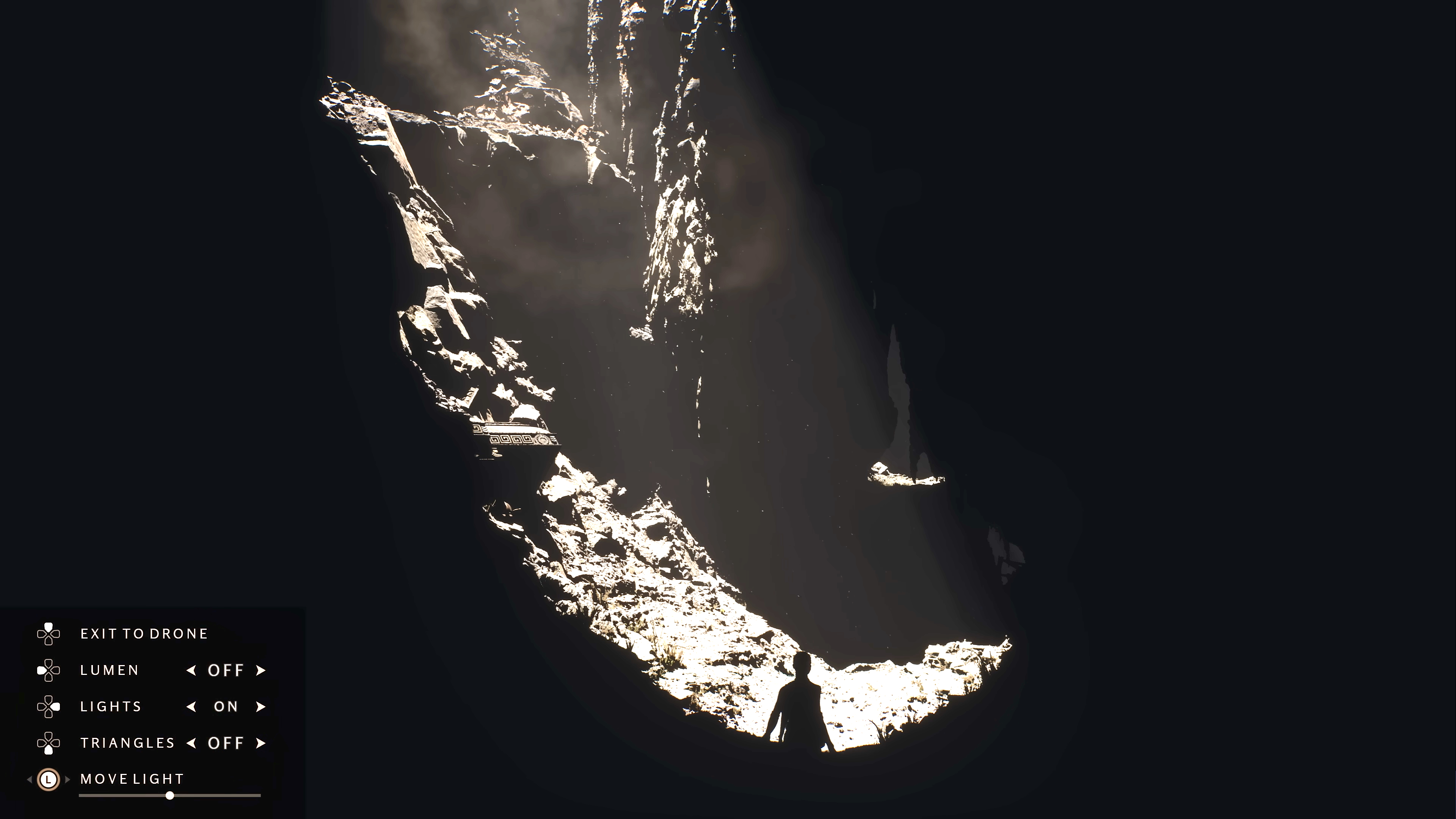
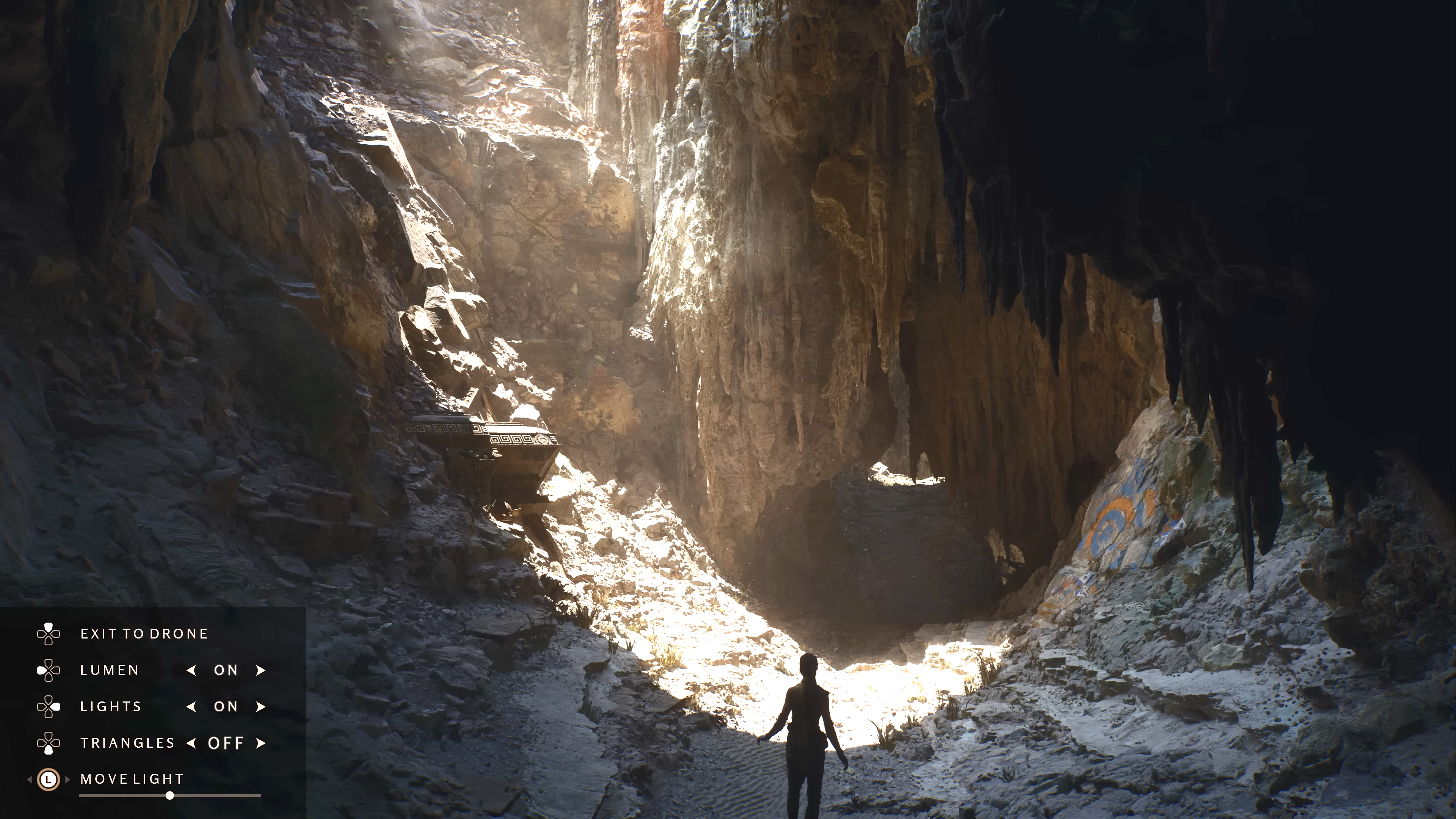
The two screenshots above illustrate the issue with fully dynamic lighting in old games like Penumbra. In the top screenshot, the light source only illuminates things directly so everything outside the focal area of the light source is pitch black. Penumbra is like this. In the bottom screenshot, real time indirect lighting (global illumination with infinite bounces) is enabled, so the light bounces off of the surfaces, carrying the illumination like in reality. Physically accurate lighting.
Audio & Visuals
Penumbra, an OpenGL game, exhibited below average texture quality for both years of its release, and the rest of the graphics were just average, except perhaps for the abundance of dynamic lights and shadows which are great to have in general and particularly excellent in atmospheric horror games like this. You spend most of your time in very dark environments anyway, and the enemies look creepy so the graphics work fine for what it is.
Obviously Penumbra is very easy to run on any modern PC, even somewhat dated integrated graphics solutions. Personally, the PC specifications I used while writing this were as follows:
- Windows 7 Professional 64-bit installed on Samsung 850 EVO 250GB SSD
- ASUS Maximus VIII Hero Z170 motherboard
- Intel Core i7 6700k @ 4.5 GHz (Swiftech H140-X + Noctua NF-A14 iPPC-2000 PWM)
- 16GB G.SKILL Ripjaws DDR4 3000 CL15 (2 x 8GB)
- MSI GTX 980 GAMING 4G with +100 MHz core clock and 122% power limit
- Creative Sound Blaster X-Fi Titanium HD sound card
- Acer Predator XB270HU monitor (27″ 2560 x 1440 144 Hz IPS with G-SYNC and ULMB)
Penumbra’s engine is limited to 60 FPS. You can force higher, but the effective frame rate remains 60 FPS. This also makes blur reduction (strobing or black frame insertion) useless, it will make the image worse. I tested this with ULMB @ 120 Hz and 100 Hz separately, each time with V-Sync keeping the frame rate identical. Even at 120 Hz/120 FPS there is far too much strobe crosstalk, so in motion everything leaves razor sharp ghosts/trails which is far worse than any kind of motion blur. So blur reduction is unfortunately not feasible in this game, even though the frame rate is high enough.
The voice acting is actually phenomenal. Clarence’s voice actor is perfect, Red’s voice actor does a perfect job too, Amabel Swanson’s voice actress is spot on. This may come as a surprise given this is an indie game, but Frictional Games has always done excellent casting.
Penumbra’s sound effects are to be adored by all. It was nominated for Best Sound Effects of the Decade (2000-2009). Not only did Frictional Games do a good job recording the sounds, Penumbra makes spectacular use of advanced OpenAL sound processing includign 3D HRTF and EFX. EFX is an open standard equivalent to Creative EAX. Hardware sound actually causes glitches in Overture though, so it may have to be disabled for certain brief portions. Red’s final dialogue and also the introduction dialogue for example are glitched and sound like a record being sped up, so hardware sound has to be disabled at times in Overture to avoid these glitchers.
EAX stands for Environmental Audio Extensions. It is a proprietary system by Creative Labs but again EFX has all the same features. In Penumbra it enables dynamic reverb/echoes, which when combined with 3D HRTF produces spectacular effects like echoes really moving down corridors and the like. It’s a shame games no longer use OpenAL and EFX even though they are free to use. The reason being more work is involved than licensing a more common sound API like FMOD which is pretty much good to go right off the bat. It’s a real shame because there is no doubt that true “next gen sound” lies with OpenAL and EFX, even though in reality it was only used in previous generation games. We’ve talked about how the industry moves backwards before and even mentioned this specific topic, so let’s not beat around the bush.
Frictional Games always relies on Mikko Tarmia for soundtrack development, and it’s great that they do. Penumbra’s soundtrack is incredible. All of their games have excellent soundtracks although Penumbra may very well be our favorite one overall.
Here’s a technical overview of Penumbra:
| 64-bit | Yes |
|---|---|
| Linux Support | Yes |
| Graphics API | OpenGL 2 |
| Frame Rate | 60 FPS Limited |
| High Resolution Support | Yes |
| Ultrawide Support | Yes |
| High Refresh Rate Support | Yes |
| Borderless Windowed Support | Requires third party software (SRWE or Special K recommended) |
| VR | No (there is an unfinished VR mod for Overture worth checking out) |
| Display HDR | No (force with Special K) |
| Shader Compilation Stutter | No |
| Ray Tracing | No |
| Mesh Shader Virtual Geometry Pipeline | No |
| NVIDIA Micro-Meshes | No |
| Advanced Distance-Based Level Streaming System with No Loading Screens | No |
| Variable Rate Shading | No |
| Sampler Feedback Tiled Texture Streaming | No |
| Sampler Feedback Texture-Space Shading | No |
| DirectStorage/RTXIO | No |
| Multicore CPU Support | 1-2 cores cores |
| GPU Physics | No |
| Adjustable FOV | No |
| Anisotropic Filtering | 16x |
| Anti-Aliasing and Upscaling | MSAA |
| Sound API | DirectSound3D (DSOAL + latest OpenAL Soft is recommended) |
| Sound | Up to 7 channels |
| Dolby Atmos | No |
| UI Scaling | Yes |
| “Analog” Keyboard Support | No |
| Debug Console | Yes |
| Modding | Yes (open source) |
Conclusion
We hardly have anything negative to say about Penumbra. Compared to Amnesia: The Dark Descent, which uses the same formula and changed the industry forever, Penumbra shows much greater emphasis on writing. The story is deeper, the dialogue is more original and more memorable. It has some of the best dialogue quality of any game and it sits within our list of top ten video game stories. It also holds two entries on our list of best video game antagonists, and we consider it a top three horror game of all time.
This begs the question about why Amnesia: The Dark Descent stole the spotlight instead of Penumbra. The reason is timing. PC gaming had grown exponentially between the release of Penumbra and Amnesia, despite this time period being only 2-3 years. With the growth of PC gaming came the rapid growth of “Let’s Play” YouTube channels, which helped sell Amnesia especially after its release. During Penumbra’s time PC gaming was smaller, “Let’s Plays” hadn’t really come into form, Steam was a lot more basic and was less of a community and mostly just a store.
Amnesia’s setting may also play a minor role in this, being set in the 1800s in a castle that’s even older. The use of lanterns, the old dungeons, the more distinct setting of Amnesia is probably more attractive to people. But the main reason was definitely timing.
As good as Amnesia and SOMA are, gamers should not forget Penumbra. It invented the formula that almost all modern horror games use, and it’s also better than almost all, only rivaled by other games made by the same people. The writing is impeccable, some of the best there is in gaming. It is far more terrifying than most of the horror nonsense that comes out today, most of which relying only on jumpscares and less detailed unoriginal settings with no noteworthy story at all. Any gaming hall of fame that does not include Penumbra is committing a terrible crime.
As Penumbra is really one episodic game plus an expansion, we’re going to score the main game as one and exclude the expansion. Graphics will be scored relative to its time period, while our standards for every other category haven’t changed for us over this period of time.
Strengths
- Excellent story
- Impressive demonstration of developing characters off screen, leading to intense encounters
- One of the absolute greatest antagonists in gaming history, only Kreia from Star Wars: Knights of the Old Republic II is on this level I think
- Succeeded at elevating the bar for delivering pure intensity for a horror game. You truly feel helpless in Black Plague.
- Extremely physics enabled interactive environment with meaningful exploration
- Some of the best sound quality in gaming history, use OpenAL Soft
- Good, although fairly mild, survival gameplay
- Almost entirely dynamic lighting and shadows. Most games today don’t even provide this.
- Very good voice acting
- Great soundtrack
- Very moddable thanks to the SDK. At this point I bet Frictional Games will even give you the source code if you ask for it, since they open sourced Amnesia: The Dark Descent.
Weaknesses
- 60 FPS engine limit
- Lacking in enemy diversity
- Two areas in Overture are prone to sound bugs when using hardware acceleration or OpenAL Soft acceleration


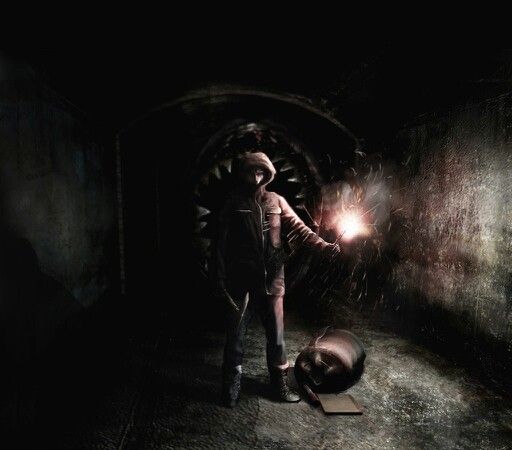














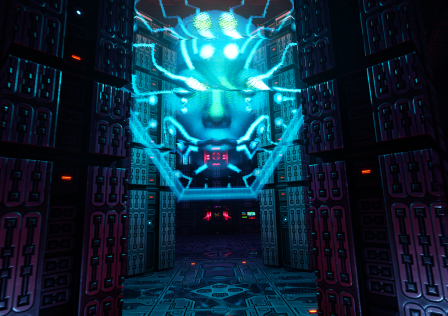
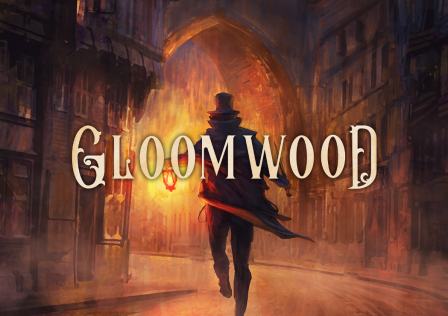


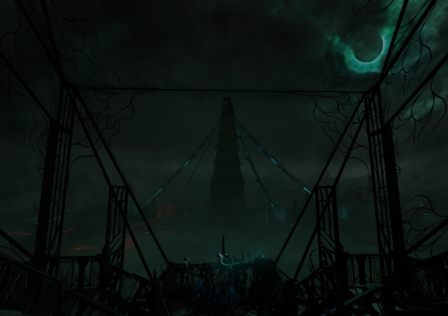
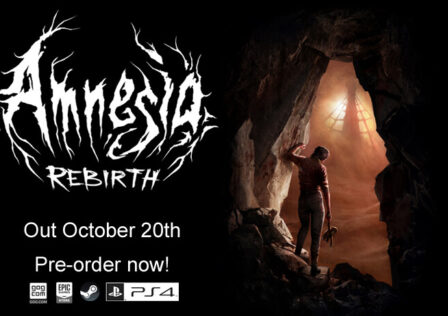
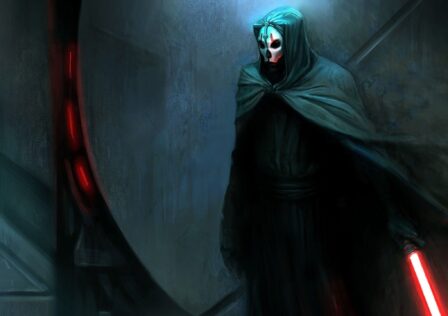


[…] want to do, the best examples of this being found in every game made by Frictional Games (Penumbra: Overture, Penumbra: Black Plague, Amnesia: The Dark Descent, SOMA), and such a thing can have tremendous […]